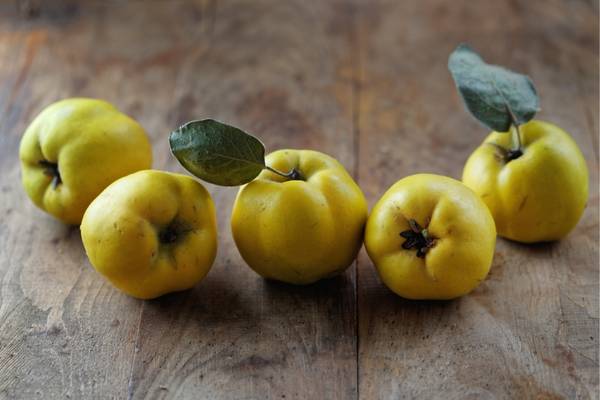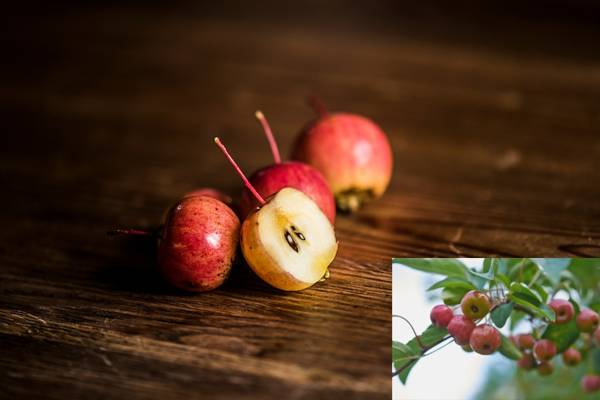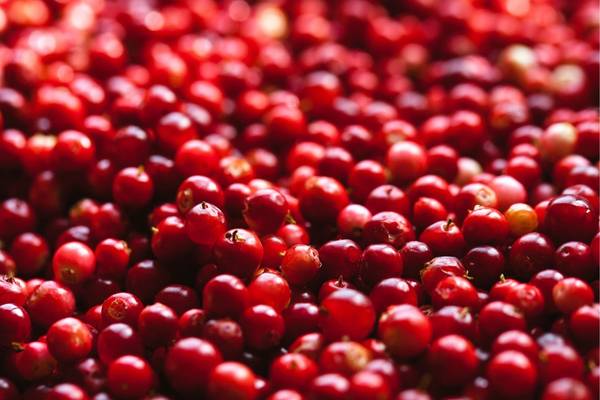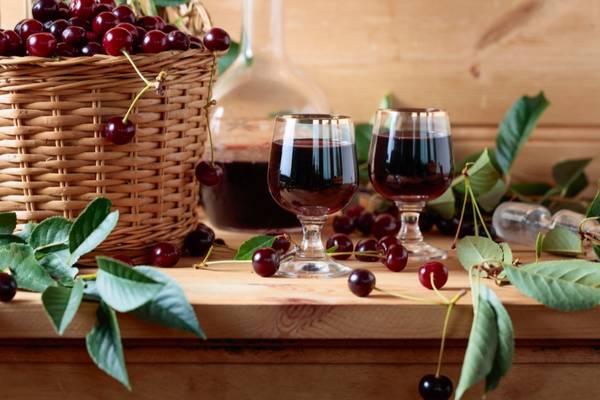While you can in theory make cider with any fruit that contains juice and sugar, these will not be considered “real” ciders unless they contain a substantial amount of apples or pears!
So, you can indeed make “cider” or sparkling fruit wine (Pet Nat) from any fruit type, it will just not be considered cider in the traditional sense!
This is because the whole definition of cider dictates that to be considered “true cider”, the juice of apples (or pears) has to make up at least 80% of the brew!
Otherwise, it will be considered fruit wine or a Pétillant-Naturel (Pet Nat) when sparkling.
However, in more modern cider making, this rule seems to be slightly overlooked, and breweries may make cider mixed with any sort of fruit as long as the process mimics that of original cider making.
And while apples have a high sugar content, which makes the cider pleasantly sweet and refreshing, you can indeed use other types of fruit as well, including cranberries, pears, and grapes.
What types of fruits are suitable for hard cider?
While there are official rules regarding the types of fruits you can use for hard cider and apples and pears are really good options for beginners, there are definitely other less-explored options worth trying.
Fruits that have a low pectin content, a high sugar content and juice yield will be best suited for cider making from a practical point of view.
These fruits include:
- Quinces (sweet varieties)
- Crab apples
- Cranberries (need to add sugar!)
- Cherries
- Blackberries
- Blueberries
- Strawberries (if filtered!)
- Lemons (need to add sugar!)
- Lime
- Low pectin peaches and plums
However, within these other fruits, there are definitely some fruit types that are better suited for hard cider than others.
For example, quinces, crab apples are good candidates for hard cider as they are related to apples and pears and will therefore behave the same.
Can you make cider from quince?
A quince tree will produce a good amount of fruit, making it an excellent choice for cider making.
Quinces are a seasonal fruit, and therefore not always available in supermarkets. For this reason, the best place to purchase them is at a farmer’s market in the fall.
Quince fruit is quite hard and somewhat unappetizing when raw, but once cooked or fermented it becomes delicious.

Quinces have an unusual and strong flavor composition, and the higher tannin content compared to apples and pears allows cider or wine made from quince to age well.
It also has a good amount of acidity that lends itself well to cider-making.
Unless you are using the larger, sweeter varieties, I would not advise making cider with 100% quince juice, but rather add it to a base of apple or pear.
I recently made a cider with 20% quince juice with the rest being a relatively neutral apple juice, and I think it adds a nice edge and nose to the final product!
Can you make cider from crab apples?
Yes! Crab apples can be used to make a sharp, delicious and refreshing cider when mixed with ordinary apples, but is too acidic and tart on their own.
The juice from crab apples has a high acid and tannin content giving them a very tart apple taste.
They are too strong in taste to use alone, but they will add a wonderful edge to ciders made from ordinary food apples or supermarket apple juice.

Therefore, most cider makes use them to supplement their apple of pear cider because they add a good deal of tannins and acid to the cider.
I have added up to 20% crab apple juice to some of my ciders with great success. It can really save a slightly flat and boring cider!
Can you make cider from grapes?
Yes! But that would technically not be cider but sparkling wine or champagne even (if made in the right way in the right place!).
Mixed with apples, grapes make a decent cider, but may require a lot of experimentation to get a good end product.
Grapes are quite acidic with a high amount of sugar, but on their own, they have an unmistakable wine flavor when fermented – and then you are making wine, not cider!
Therefore, to make cider with grapes, they will have to be used to supplement the cider made from either apples or pears up to 20% of the volume.
Start out with apple or pear ciders, and experiment with different proportions of grapes to find out what flavors you like best.

Ideally, grape juice should be added late in the process, after primary fermentation has been done and before secondary fermentation occurs.
This stage is called the conditioning phase, where the cider is left to age and develop.
Grape juice can be added at this stage to the mixture or it could be added later during bottling in smaller amounts.
Adding grapes can give some good acids and wine tastes to the cider, and it can also add color in the case of red grapes.
I have experimented with this method, and while I prefer adding the grape juice when the cider is finished fermenting, a lot of people prefer this method because it gives better carbonation.
However, grape ciders are not very common cider, and even commercial cider makers rarely make them.
Can you make cider from oranges?
Oranges are extremely sweet and tangy when eaten, but the juice has a distinctive orange flavor.
Oranges can be used in a variety of ways to make cider, but they tend to leave a mellow beer-like bitter taste and a cloudy end product without much tannin or body.
If using sweet oranges, the flavour of the cider will be similar to that of sweet ciders made from other fruits with low bitterness such as peaches, melon or lemons.
If using sour oranges, the cider will take on a sour and tangy, almost flat flavor that will taste a bit like some lambic sour beers.

I do not recommend making cider with 100% orange juice, but you can add a bit, max 10% in my experience, to apple or pear juice before or after primary fermentation.
Adding the juice of oranges to apple cider can give it a more tropical flavor, and also adds significant quantities of Vitamin C!
The juice of oranges can be added to cider either when fermenting or after fermentation. I would recommend adding it to cider after fermentation because orangs adds a strange bitter taste when fermented!
Adding orange juice during fermentation also tends to give a cider a cloudy look as it does contain a lot of pectin.
Can you make cider from lemons?
Lemons in general are not very good for making cider even though they contain more sugar than people usually think as their acidity masks it!
However, because lemons have very high acidity, you can use them to add some acidity to cider, without adding too many other tastes.
But cider with 100% lemon juice will be too sour!
Lemons have high levels of citric acid along with vitamin C and flavonoids, all of which help to boost the immune system.
Lemon juice will add a nice acidic edge to a cider, which otherwise may be too bland. It can also help lower the pH to prevent contamination and extend the shelf life of the bottled cider.
I recommend adding it anywhere from 5% to 10%. Too much lemon can overpower the cider.
I typically squeeze the juice from about 10-15 lemons at a time, and then mix it in with 1 gallon of apple juice. After mixing the two juices, I pour the entire mixture into my fermentation carboy.
What about lime?
Like lemons, limes make an excellent addition to cider and are commonly used for flavoring hard cider.
When mixed with apples, the limes contribute to their bright acidity, which compliments the sweetness of the apples.
Unlike lemon, which tends to manifest itself mote in the overall flavor profile of a cider, the aroma from lime is much more intense and noticeable.
It also has a most refreshing and thirst-quenching effect, making it a perfect addition to ciders intended for summer drinking!
Limes can also be used to make cider more acidic by halving and squeezing the juice into the cider before fermentation.
Can you make cider from cranberries?
Cranberry juice can be a tasty addition to cider, mixing the sharp and tangy cranberry taste with the mellow flavours of a cider.
Cranberry juice by itself is too sour with too little sugar to really make a tasty cider, and the juice doesn’t hold up well in fermentation, so cider makers tend to leave it for mixing in.
Cranberries, despite having a tart, bitter and acidic taste, add a wonderful depth of flavour, acidity and tannin to cider. This makes them perfectly suitable for dry ciders.

Some cider makers will add up to 10% cranberries to their ciders with great results, but others recommend adding less than this.
I would recommend adding 5-10% cranberries to a cider, and if the flavor seems to lack acidity and tannin, add a little sugar to balance it if the juice is not sweet enough.
They add a wonderful nose and fruitiness to the final product.
Can you make cider from blueberries?
Yes! Blueberries can stand alone (almost!) in making a good cider or sparkling wine.
A great way to use fresh or frozen blueberries is to make a cider out of them. Blueberries are a very acidic fruit, but though they have high acid, they are relatively low in tannin, which results in a somewhat mellow wine or cider.
Therefore, blueberry cider will be quite soft, and might have a touch of sweetness although it is not recommended to bottle it up without adding a few, very tart apples or crab apples, or a little tannin like grape tannin or cherry bark tannin.
The trick to making a blueberry cider is to add additional juice from tannic fruits such as crab appels or quince to balance out its low amount of tannin. A ratio of 4:1 of blueberry to crabapple or quince juice accordingly works really well.
I have also experimented with frozen blueberries A half gallon of blueberry juice combined with half gallon of apple juice, and a handful of crab apples, and 2 oz of grape tannin, resulted in a quite dry, acidic, and totally delicious blueberry cider!
Can you make cider from cherries?
Cherries are often used in wine-making to add color and a sweet cherry finish. They do not, however, add much of any tannins to the drink. Instead, they add quite a bit of sugar and a nice mellow cherry flavour.
In small amounts, cherries can be a great addition to cider to add a bit of flavor and color. However, in my ciders I usually prefer to use other fruits to add these extra qualities to the cider.
Of course, if you want cherry specifically, there is no other way than to add cherries or their juice directly to your cider!

Cherries can be used to make cider, but owing to the large amounts of sugar they add, it can prove a problem. When the cider is fermenting, the yeast will digest most of the sugar, and when the cider is subsequently bottled the unfermented sugar in the cherries will ferment in the bottle.
This can be very unpredictable, as the alcoholic content might sink to near or below 1% alcohol, which would make it illegal to sell in most countries.
However, some cider makers add 3-6 pounds of cherries to a full gallon of fermented cider, which amounts to 1-3 lbs of unfermented sugar. They will then ferment in bottles and add a huge cherry flavor to their end product.
I think a few milliliters of cherry juice or cherry concentrate (made by boiling down cherries in sugar syrup) is ok, but more than that is too much in my opinion.
Can you make cider from strawberries?
Yes, but whereas the cider made from strawberries can be mild and fresh, it will also be a bit boring in my opinion.
Used alone, strawberries lack the acid and tartness, which gives a good cider body. It also has a lot of sugar and pectins, which makes it hazy unless filtered.
Strawberry cider can be made from fresh strawberries or it can be made from strawberry concentrate.
Strawberry concentrate can be found in some home brew stores, and is fine to use on its own, mixed appropriately with water, to make a fresh sparkling cider.
Pectins can be problematic as they cloud your cider, but addition of pectinase will solve some of it. However, if you buy strawberry concentrate, it has been heated to evaporate the excess water which will “set” the pectins and cause a permanent hazy in your cider that cannot be removed with pectinase.
Fresh strawberries should only be used in small amounts because their taste can change and ruin the cider.
You can use up to 10% strawberry concentrate in a normal strong apple cider recipe, but more can be used if you are making a dry cider.
Can you make cider from blackberries?
Blackberry is a wonderful fruit with good potential for cider making. It contains some pectin but lots of sugar, and when fermented it makes a cider that is high in alcohol and still sweet.
However, to get the best results, it is best to let the fruit slowly ferment on its own. As it sits, it will slowly start to ferment in the potential alcohol, eventually going completely dry.
Alternatively, you can add blackberries to a sweet, control cider to make what we call “Black & White” or “Storm” (Blackberry and Cider).
I imagine it makes an incredibly refreshing drink, especially when it is hot outside, but I have not tried this one myself (yet!).
Can you make cider from peaches?
Peach juice can be used for making a lovely, sweet, delicate cider. Peach juice lacks the acidity and tannin content of apples and pears, making it harder to use alone as a juice.

Peach syrup, made from boiling the fruit in water, has a very similar taste and can be used as a sweetener and additive in cider making.
Peach juice is fairly simple to make at home. Select the ripest and tastiest peaches you can, and peel and chop them.
Place them into a container, cover with water, and leave to stew for about 4 hours, by which time they should be very soft.
Can you make cider from pineapple?
Pineapple juice has been used as a “spice” by cider makers in the North-Western United States. However, it is not usually used on its own because of the strong flavor it adds to cider.
It is not unheard of to make cider from pineapple juice and in some Northern European regions, pineapple juice is a common additive.
This is not only because of the taste, but because pineapples contain proteases that break down large cloudy proteins and can help to clear up the cider and reduce foaming!
So, if you are looking to add a bit of sparkle, clarity and flair, consider adding a little bit of pineapple juice to you cider. Don’t add too much though, or it will taste like a tropical punch!
What about kiwi in wine and cider?
I have only ever added kiwi to my wine making, but I know a few people that have added it to their cider successfully. I have never tried it myself.
The fruit contains a high level of enzymes that can cause issues when making wine due to its negative effect on yeast growth.
Kiwi also contains a lot of pectins, which will make your wine or cider very cloudy!
The fruit itself has a high acidity and will ferment and add some sweetness and body to a cider, but I wouldn’t advise making ciders 100% kiwi.
Can you make cider from mango?
Mangoes have a lovely sharp, sweet, and sour tropical flavor, making this fruit an excellent additive for making ciders.

Mangoes contain a large amount of natural sugar, and you must take care to add too much because as the sugar is fermented it will become very alcoholic. A cider made with overripe mangoes may end up with an alcohol content of over 16%!
Adding a bit to the cider will provide a nice touch to your cider.
I have found that mangos can give ciders a tangy, fruity taste, but a higher dosage of them can give the cider a bitter taste.
I usually add the juice from about 8-10 mangos to a batch of 2 gallons of cider to give it a nice sweet tropical edge.
Personally, I also add a bit of hops to my mango cider, which gives it a wonderful (sour) beer taste!
Conclusion
If you are looking to make a cider from an uncommon fruit and you are struggling to find what that fruit can possibly impart to your cider, one of these options should work.
There are a lot of great fruits to be found, so have a look around and see if you can make a special cider from something unusual.
If you can’t find a good use of a fruit, use it as a “spice”, adding it to your cider like you would do with spices when cooking!




